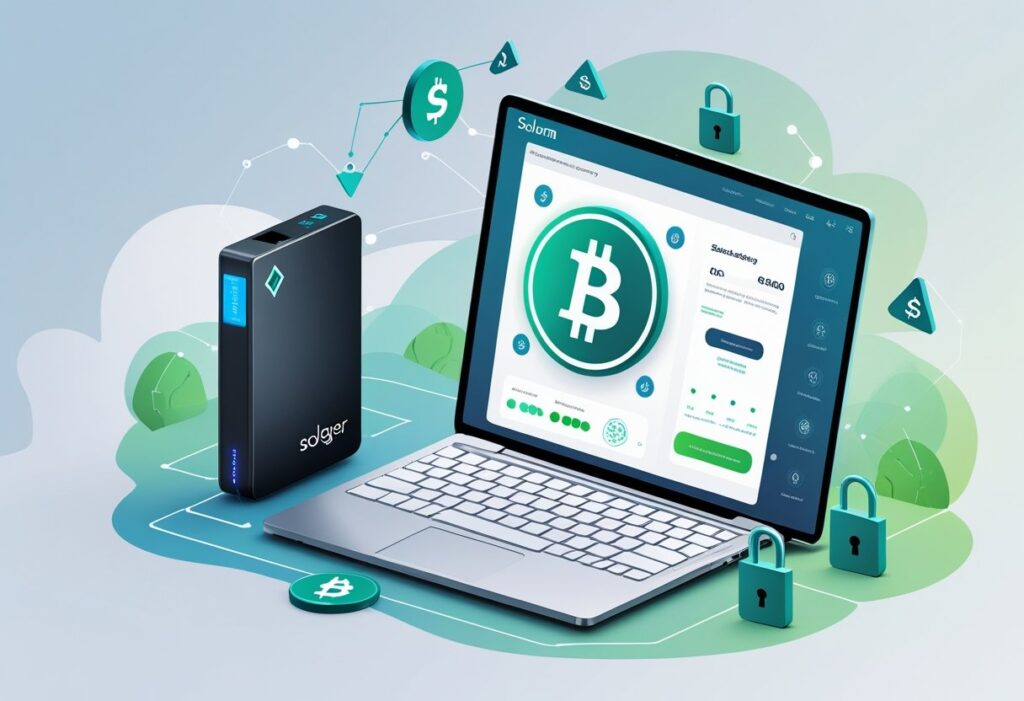
How to Stake Solana on a Ledger Securely and Efficiently
How to Stake Solana on a Ledger hardware wallet offers a secure way to earn rewards while keeping your private keys offline. The process involves using Ledger Live to delegate your SOL tokens safely to a validator, ensuring both security and a steady source of passive income. This method reduces the risk of hacks common with online wallets.

Cold Wallet vs Hot Wallet Security 2025: Key Differences and Best Practices Explained
When deciding how to store cryptocurrency securely, understanding the difference between cold wallets and hot wallets is crucial. Cold wallets offer stronger security by keeping private keys offline, reducing the risk of hacking. Hot wallets provide greater convenience through internet connectivity but come with higher exposure to cyber threats. Let's dive into Cold Wallet vs Hot Wallet Security.

How to send crypto without fees using efficient wallet strategies in 2025.
Sending cryptocurrency without fees is possible by selecting the right platforms and cryptocurrencies. Some networks, such as Proton Chain, allow users to wrap major coins like Bitcoin and Ethereum into tokens that can be sent with zero transaction fees. Using specialized wallets or exchanges that support fee-free transfers also enables cost-free crypto transactions. So let's dive in on How to Send Crypto without Fees.

Best GPU for Ethereum Mining 2025: Top Picks for Efficiency and Performance
Ethereum mining in 2025 demands GPUs that balance high hash rates with power efficiency. The NVIDIA GeForce RTX 4090 and AMD Radeon RX 7900 XTX stand out as the best GPUs for maximizing mining performance and profitability this year. These models deliver superior processing power, cooling solutions, and VRAM capacity, which are critical for sustaining long mining sessions.

How to Spot Crypto Scams in 2025: Key Signs and Prevention Tips
Crypto scams are becoming increasingly sophisticated in 2025, targeting investors through advanced techniques like phishing, fake projects, and AI-generated deepfakes. The key to spotting these scams lies in recognizing unusual red flags such as unrealistic promises, excessive hype, and unverified platforms before committing any funds. Staying vigilant and informed is essential to protect digital assets in this fast-evolving landscape. How to spot Crypto Scams.

How to Report Crypto Taxes in General 2025: A Clear Guide for Compliant Filing
Reporting crypto taxes in 2025 requires careful tracking of all digital asset transactions, including purchases, sales, trades, and...

Best Altcoins Under $1 to Buy 2025: Top Affordable Cryptos with Growth Potential
Investors looking for growth opportunities in cryptocurrency often focus on altcoins priced under $1, as they offer a chance to enter promising projects without a large initial investment. The best altcoins under $1 to buy in 2025 combine strong fundamentals, real-world use cases, and active communities, making them attractive options for potential growth. These affordable tokens can provide exposure to emerging technologies while minimizing upfront costs.

Best time to buy Bitcoin in 2025 Explained with Market Trends and Expert Insights
Determining the best time to buy Bitcoin in 2025 depends on understanding the market’s current trends and potential future movements. While no timing can guarantee profits, the most strategic opportunity to purchase Bitcoin this year tends to be after market corrections or dips, when prices temporarily pull back from highs. Investors who wait for such moments can benefit from lower entry points without missing overall upward trends.

Best NFT Wallets for Beginners: Top Secure and User-Friendly Options Reviewed (2025)
etting started with NFTs requires a reliable wallet designed for ease of use and security. The best NFT wallets for beginners offer simple interfaces, strong security features, and compatibility with popular blockchain platforms. Choosing the right wallet can help new users confidently store, buy, and sell NFTs without unnecessary complexity.

Best DeFi Platforms for Beginners Explained: Top Options and Key Features in 2025
Decentralized finance (DeFi) has quickly become a popular way to manage and grow digital assets without relying on traditional banks. For beginners, engaging with DeFi can seem complex, but selecting the right platform simplifies entry into lending, borrowing, and earning passive income. The best DeFi platforms for beginners combine user-friendly interfaces with strong security and reliable services, making it easier to start investing confidently.